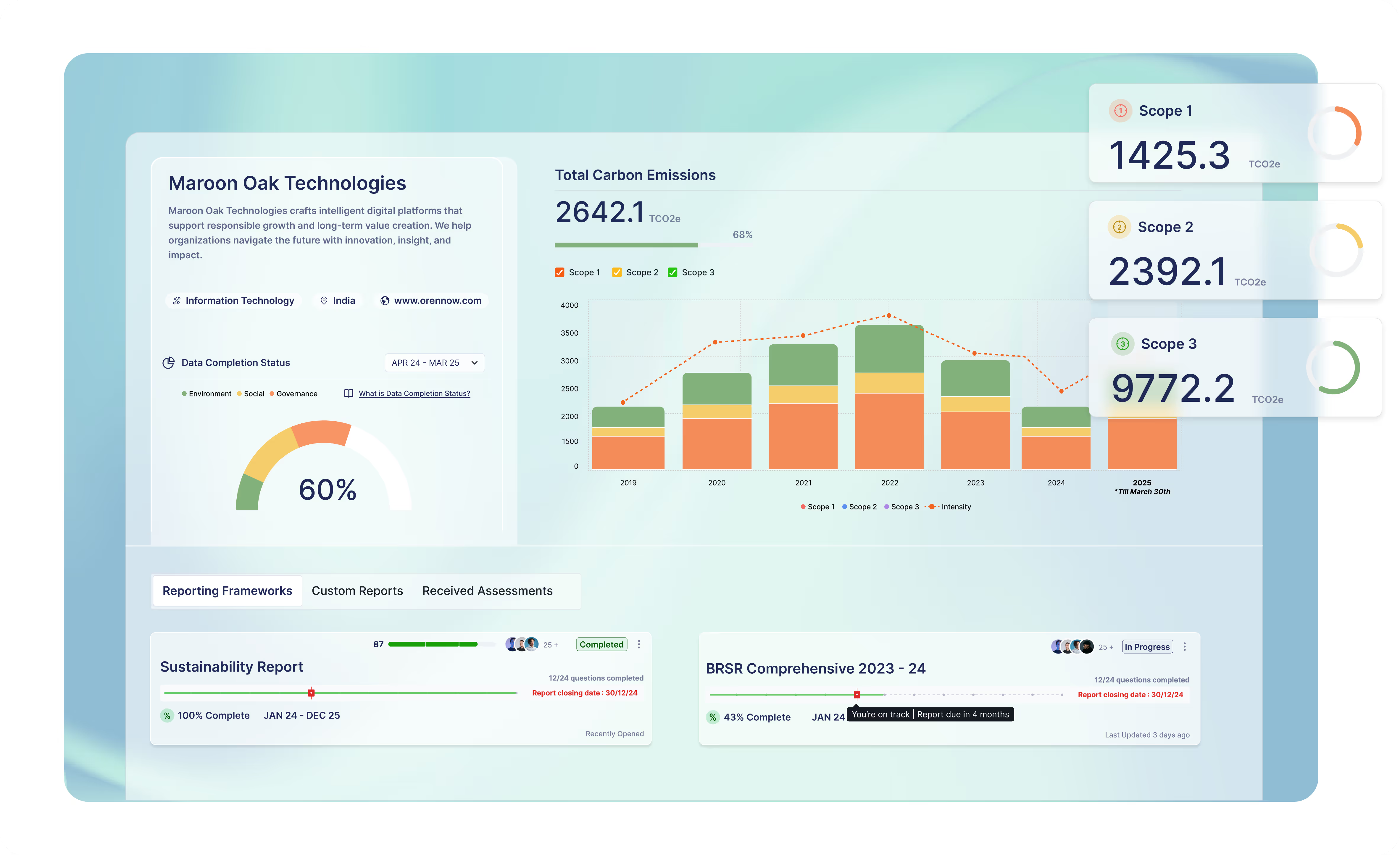How to Create a World-Class Supply Chain Sustainability Program

What is Supply Chain Sustainability?
Supply chain sustainability means building a supply chain that, in addition to delivering products efficiently, follows a responsible approach. The process accounts for the environmental, social, and economic considerations throughout the entire life cycle of a product. The goal is to create a foundation for resilient, responsible, and future-ready operations.
A supply chain sustainability programme primarily asks these three questions:
- Is this process environmentally responsible? There should be lower emissions, efficient resource use, and responsible waste management.
- Are workers treated ethically at every stage? It should follow safe working conditions, be aligned with human rights, and offer fair wages.
- Can these practices support long-term growth without harming people or the planet? Materials should be sourced from suppliers committed to environmental and social responsibility.
The value goes far beyond compliance. A sound supply chain sustainability strategy drives:
- Higher trust and loyalty and better marketplace perception result in a stronger brand reputation.
- Reduced energy consumption combined with reduced waste and material usage brings operational costs down.
- Stricter environmental regulations and climate-driven decisions can help with better risk management.
Devising an Optimal Supply Chain Sustainability Strategy
Creating an impactful supply chain sustainability strategy requires clarity, alignment, and the right tools. Key components include:
- Internal Alignment: Ensure all sustainability initiatives support your broader corporate goals and long-term vision.
- Supplier Code of Conduct: Define expectations on environmental and social responsibility using frameworks such as GRI (Global Reporting Initiative) and BRSR (Business Responsibility and Sustainability Reporting).
- Stakeholder Requirements: Integrate customer, regulatory, and industry expectations. Use benchmarks like GRESB (Global Real Estate Sustainability Benchmark) and SASB (Sustainability Accounting Standards Board) to stay aligned with best practices.
- Selecting the Right Suppliers:
- The process should start with critical suppliers. Assess their sustainability practices and prioritise those with stronger maturity.
- Then, move to non-critical suppliers. Expand using a risk-based, tiered approach.
- Developing Supplier Knowledge: To empower suppliers and make sure they are aligned with the goal by providing:
- Training on sustainability requirements
- Resources, tools, and guidance to uplift performance
- Using a Platform for Execution: Platforms like Oren Sustainability Hub (OSH) enable:
- Industry-specific assessments
- Scalable rollout
- Supplier support and streamlined data entry
- Automated metric calculations
Key Steps to Building a World-Class Supply Chain Sustainability Program
Building an efficient supply chain sustainability programme involves a series of strategic actions taken to achieve long-term impact.
Step 1: Build Knowledge & Understand Your Supply Chain
Map end-to-end processes, assess environmental, social, and economic impacts, and group suppliers by their sustainability maturity.
Step 2: Set Clear Objectives
Align goals across all partners. Ensure everyone shares the same priorities and understands what success looks like.
Step 3: Define KPIs & Measurement Methods
Measure important areas mentioned below and use software tools to consolidate and track data.
- Environmental performance
- Social impact
- Compliance
- Energy efficiency
Step 4: Standardise Processes
Develop procedures and operational manuals that consider environmental, social, governance, and sustainability aspects. Include practices like audits, quality controls, and continuous improvement.
Step 5: Improve Product Design
Review raw materials, energy use, and manufacturing processes. Apply design-for-manufacture, design-for-assembly, and design-for-repurpose principles.
Step 6: Monitor & Continuously Improve
Identify risks early, engage suppliers actively, and prioritise long-term collaboration with partners committed to improvement.
Step 7: Ensure Transparency
Document certifications, accreditations, and operating standards. Traceability strengthens credibility and allows stakeholders to verify sustainability claims.
Challenges and Best Practices
The key challenges a supply chain sustainability programme can face include:
The best practices a supply chain sustainability strategy should follow are:
- Start with a Maturity Assessment: Use smart tools to identify current strengths, gaps, and priority improvement areas.
- Align Procurement, Sustainability & Leadership: A shared understanding across departments speeds up decision-making and ensures everyone works toward the same goals.
- Embed Sustainability into Procurement: Integrate sustainability requirements into onboarding, due diligence, supplier selection, and performance evaluation.
- Engage Suppliers Proactively: Monitor supplier performance, provide clear expectations, and collaborate to drive continuous improvements.
- Track & Benchmark Progress: Measure consistently to improve transparency, stay agile, and strengthen long-term supply chain resilience.
Conclusion: The Business Value of Supply Chain Sustainability
A strategic, well-structured supply chain sustainability programme strengthens resilience, reduces environmental impact, and enhances brand credibility. With clear baselines, supplier engagement, and robust tools, organisations can significantly improve compliance, reduce operational costs, and future-proof their supply chains. The result to expect is a more transparent, competitive, and responsible supply network that creates long-term value.
FAQs
1. What are some key performance indicators (KPIs) for supply chain sustainability?
KPIs that track environmental performance, energy use, social impact, compliance, supplier maturity, health and safety can be used for measuring supply chain sustainability performance. They help organisations benchmark progress, identify risks, and measure how well sustainability commitments are incorporated across procurement processes and supplier operations.
2. What technologies support transparency and traceability in sustainable supply chains?
Platforms like Oren Sustainability Hub streamline data collection, automate assessments, and support suppliers with guided inputs. These tools enable better visibility, documentation, and traceability, helping organisations verify sustainability performance across their supply base.
3. How important is supplier collaboration in achieving sustainability goals?
Supplier collaboration is critical. Training, shared resources, and open communication help suppliers meet expectations and drive continuous improvement. Strong engagement improves data quality, reduces risk, and ensures sustainability progress across both critical and non-critical supplier groups.
Latest Blog Posts
Dive into our blog for insights on making your organization more sustainable.
Sustainability Simplified
Wherever you are in your sustainability journey, we help you advance with confidence.
Schedule a Call



.avif)

